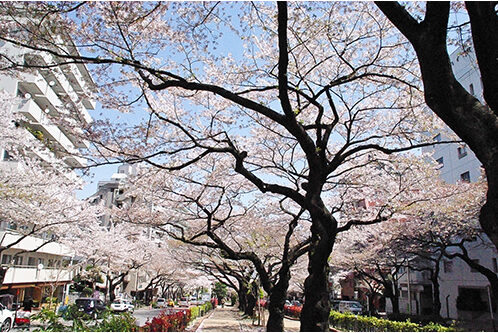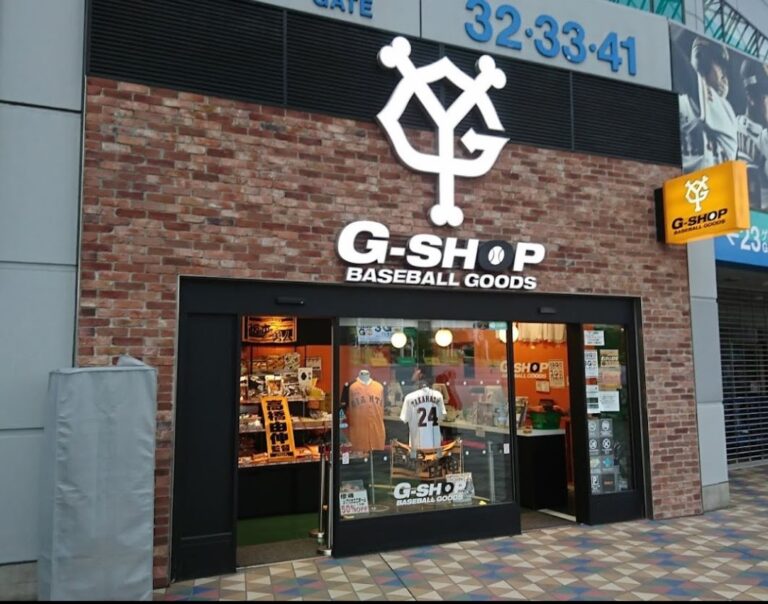Tokyo Dome is a multi-purpose stadium in the heart of Tokyo, Japan. It is one of the most famous landmarks in the city and is used for a wide range of events, including baseball games, concerts, and other sporting events. The stadium is home to the Yomiuri Giants, a professional baseball team in Japan, and has a seating capacity of 55,000.

Aside from the stadium, Tokyo Dome City is a popular destination and includes an amusement park, shopping center, and various restaurants and cafes. It is conveniently near Korakuen Station on the Marunouchi subway line and Suidobashi Station on the JR Chuo Line, making it easy to get to.
Visitors to Tokyo Dome can enjoy experiences, from watching a baseball game to riding roller coasters at the amusement park. The stadium is also known for its impressive architecture, which includes a retractable roof that can be opened or closed depending on the weather.
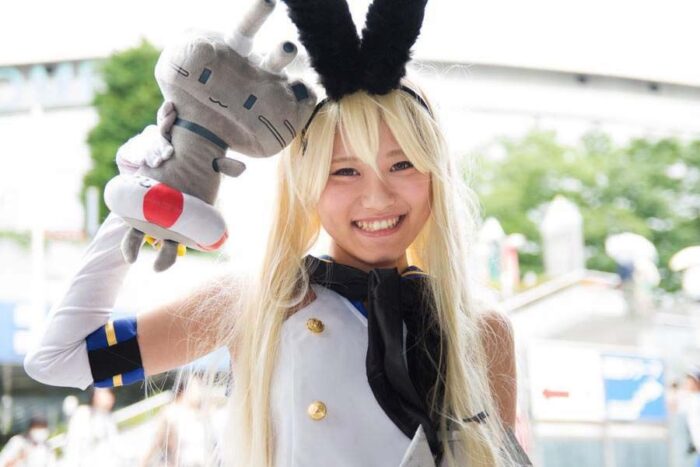
Whether you’re a sports fan or just looking for a fun day out, Tokyo Dome is definitely worth a visit.
History
The Tokyo Dome is a stadium and entertainment complex in central Tokyo, Japan. It opened in 1988, making it one of the newer stadiums in Japan. The site it is built on was previously the location of the Koishikawa Arsenal, which produced munitions and early firearms for the Japanese military from 1871 until 1935.
Ground was broken on the Tokyo Dome on May 16, 1985, and it was constructed on the site of the Velodrome. It is a dome-shaped stadium that can accommodate up to 55,000 people. The stadium is known for its unique design, which includes an air-supported dome that supports the membrane roof by air pressure difference.
Since its opening, the Tokyo Dome has been used for events, including baseball games, concerts, and other sporting events. It is most famous as the home of the Yomiuri Giants baseball team, one of the most popular teams in Japan. The stadium has also hosted a number of international events, including the 1991 World Games and the 2006 World Baseball Classic.
Design and Features
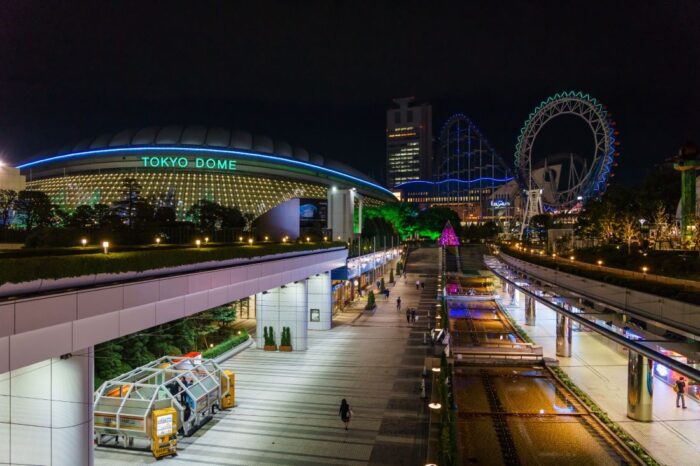
The stadium was designed by the Japanese architect Kenzo Tange, who also designed the Yoyogi National Gymnasium for the 1964 Summer Olympics. The stadium’s design is unique, featuring an air-supported dome roof that is made of a flexible membrane material. The roof is supported by air pressure, which is maintained at 0.3% higher than the outside air pressure. The stadium has a seating capacity of 55,000 people and is used for events, including baseball games, concerts, and other sporting events.
It is also home to several other facilities, including the Tokyo Dome Hotel, which has 43 floors and 1,006 guest rooms. The hotel offers stunning views of the city and includes ten restaurants and bars, as well as several banquet rooms and business and leisure facilities. Additionally, the stadium complex includes the Spa LaQua, a large spa and wellness center that features hot springs, saunas, and other relaxation facilities.
One of the most unique features of the Tokyo Dome is its retractable seating system. The stadium’s lower seating bowl can be retracted to reveal a flat, open space that can be used for events, including trade shows and exhibitions. The retractable seating system is operated by a series of hydraulic lifts that can move the seating bowl in and out of the stadium in just a few hours.
It is also known for its advanced sound and lighting systems, which are designed to provide an immersive experience for audiences at concerts and other events. The stadium’s sound system features a total of 120 speakers and is capable of producing up to 140 decibels of sound. The lighting system includes more than 1,000 individual lights and is capable of producing a wide range of colors and effects.
Events and Activities
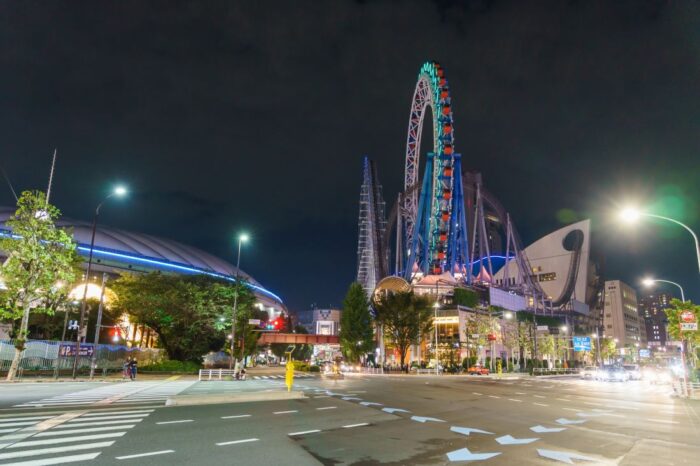
Tokyo Dome is not only a sports stadium but also a venue for various events and activities. From concerts to festivals, there is always something happening at Tokyo Dome. Here’s a few of the events and activities you can look forward to:
- Concerts: The stadium is one of the most popular concert venues in Japan, and many famous artists have performed here. Keep an eye on the schedule to see if your favorite artist is coming to Tokyo Dome.
- Festivals: Tokyo Dome hosts festivals throughout the year, including the Bunkyo Cherry Blossom Festival, which takes place in March and April. The festival features food stalls, live music, and of course, cherry blossoms.
- LaQua: LaQua is a wonderful day spa and hot springs center.
- Tokyo Dome City Attractions: This is a great centrally located amusement park that is easy to visit
In addition to these events and activities, there are also shops and restaurants in and around Tokyo Dome City. Whether you’re looking for souvenirs or a bite to eat, you’re sure to find something to your liking.
Access and Transportation
Tokyo Dome is easy to access by public transportation. Here are a few of the ways to get there:
- Train: The nearest station to Tokyo Dome City is Suidobashi Station, which is served by the JR Chuo and Sobu lines, as well as the Subway Mita Line. Korakuen Station on the Subway Marunouchi and Namboku Lines is also nearby, as is Kasuga Station on the Subway Oedo Line.
- Limousine Bus: If you are coming from the airport, you can take a limousine bus directly to Tokyo Dome City. This is a convenient option if you have a lot of luggage or if you prefer not to navigate public transportation.
Once you arrive at Tokyo Dome City, there are several transportation options available to help you get around the area:
- Walking: Tokyo Dome City is a compact area, and it is easy to get around on foot. This is a great way to explore all of the attractions and amenities that the area has to offer.
- Bicycle: If you prefer to travel a bit faster, you can rent a bicycle at Tokyo Dome City. This is a fun and eco-friendly way to get around the area.
- Bus: Tokyo Dome City is served by several bus routes, including the Toei Bus and the Tokyo Sakura Tram.
No matter how you choose to get to Tokyo Dome City, you are sure to have a great time exploring all of the attractions and amenities that this popular Tokyo destination has to offer.
The Sum Up
You can enjoy a baseball game at the stadium, experience the spa and fitness center at LaQua, or take a stroll in the beautiful Koishikawa Korakuen garden nearby. With the diverse range of activities available, Tokyo Dome City should be on your to-do list for anyone traveling to Tokyo.
| Name | Tokyo Dome |
|---|---|
| Address | 1-3-61 Koraku, Bunkyo-ku, Tokyo |
| Site | Tokyo Dome |
Where To Stay In Tokyo
Tokyo visitor levels are currently at an all-time high so make sure to book your hotels early. Tip most hotels booked with booking.com have free cancelation so book as soon as you know your date and you can always cancel if you change your mind.


